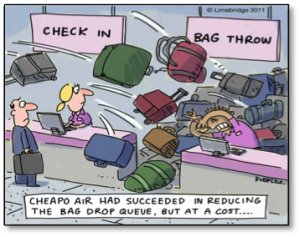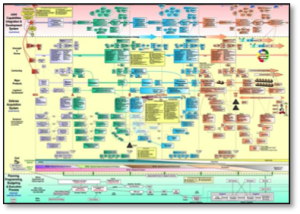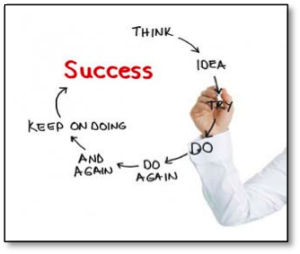 “So,” the engineering manager said as we sat down to our first planning meeting, “what do you think about process?”
“So,” the engineering manager said as we sat down to our first planning meeting, “what do you think about process?”
“As compared to what?” I said.
“As compared to getting things done,” he said, fixing me with a steely look.
“Ah,” I said. “Well, actually, I like the process of getting things done.”
Fortunately, he laughed and I laughed and we managed to get our working partnership off on the right foot, but the exchange stayed in my mind as an excellent example of the ongoing tension between the forces of structure, methodology and consistency and the armies of just do it, take a risk and play it as it lays. My new colleague clearly viewed process as a barrier to the success of his team and he is not alone in that belief. In professional articles and hallway conversations and team dynamics you see it positioned as a process/no process conflict: Do we use process for this or not? At what stage is process important? How much process is too much process? Does process stifle innovation? They are legitimate questions, but unfortunately, they aren’t the right questions. Process can be a hindrance, true, but the alternative isn’t no process, it’s the right process.
Process isn’t something we have or don’t have, use or don’t use; process is the series of actions, changes or functions that bring about a result. That means everything we do is a process. We floss our teeth, eat spaghetti, mow the lawn, start a company, run a meeting, book a flight, negotiate a deal. We are processing all day, every day, and we will continue to do so until we die, which is…wait for it…also a process.
That doesn’t mean that every process we use is a good process. There are many reasons why the processes we are following don’t get us what we want. Some processes have too many steps. Some processes call for the wrong tools. Some are outdated and no longer apply to today’s requirements. Some may give us the result we were looking for, but they have unintended consequences that create more problems than they solve.
In addition, one process does not fit all situations. Having a template that has worked in the past is a good thing, but only if that template fits the challenges you find yourself in today. Six Sigma might be an excellent way to enable incremental improvement in a manufacturing organization, but its hierarchical approach relies heavily on the expert model, designating only certain “black belts” as the guides to process improvement, and is therefore not as effective in an organization that depends on the innovative contribution of each team member, relies heavily on creative collaboration and encourages risk taking.
 So what would be a better way to frame the conversation? How do we extricate ourselves from process-bound or process-deficient organizations? We need to put our attention on the effectiveness of each process and how well it meets the needs of the situation in which it is being employed.
So what would be a better way to frame the conversation? How do we extricate ourselves from process-bound or process-deficient organizations? We need to put our attention on the effectiveness of each process and how well it meets the needs of the situation in which it is being employed.
I recently led an organization-wide process refresh at a large technology company. It had a standard phase review process with a series of checklists for each phase that had been adequate to meet the needs of the company’s original hardware and software products. In recent years, however, the company had expanded its product offering and had also created a division that focused exclusively on customer solutions. In an attempt to make the phase review process fit these changing requirements, additional steps had been added to the checklists until they had ballooned to 7 spreadsheet tabs and a total of 920 individual action items. Process bound? Yes, and no. There was way too much complexity on the one hand, but, for some groups, way too little guidance and support for their specialized needs. In response, the refresh team undertook an evaluation of each product group, and developed a customized approach that streamlined the checklists, and facilitated the optimal delivery cadence.
We live in a time where the pace of change and the relentless demands of the market are taking us way past our comfort zone. As we are asked to do more, to do it faster, and often to do it with fewer resources, it’s more important than ever that we do what we do as efficiently, as effortlessly and as swiftly as possible. To accomplish this we will need to create repeatable processes that meet the requirements of our projects and provide us with the most direct path to successful results. Like everything else we do, success is a process.

Great insights, Courtney! I sometimes call process “the P word” because of the disdain some people have for it.